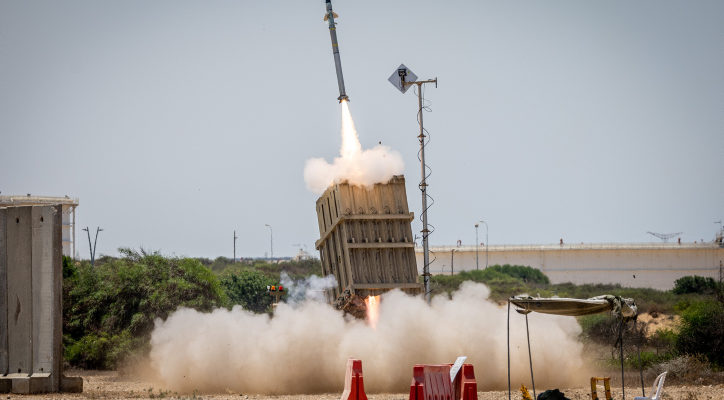Following thousands of rocket attacks from Hamas and Hezbollah, two massive ballistic missile attacks from Iran, and sporadic missile and drone attacks from Yemenite Houthis, Israel is reportedly running low on interceptor missiles that could leave air defenses ‘stretched.’
By World Israel News Staff
Israel’s air defense network is facing a possible shortage of interceptor missiles, and is at risk of being “stretched” thin in future confrontations with Iran and Hezbollah, ex-military officials and experts told The Financial Times.
“Israel’s munitions issue is serious,” Dana Stroul, a former American Deputy Assistant Secretary of Defense for the Middle East, told the Times.
“If Iran responds to an Israel attack, and Hezbollah joins in too, Israel air defenses will be stretched.”
According to Tuesday’s report, the U.S. is working to help relieve the impending shortage, including the impending deployment of Terminal High Altitude Area Defense (THAAD) anti-ballistic missile defense systems in Israel.
Even with U.S. assistance, however, Israel could soon be facing a “tipping point,” Stroul continued.
“The U.S. can’t continue supplying Ukraine and Israel at the same pace. We are reaching a tipping point.”
Meanwhile, Israeli suppliers said they are working round the clock to keep the IDF supplied with interceptor missiles.
“Some of our lines are working 24 hours, seven days a week. Our goal is to meet all our obligations,” said Boaz Levy, CEO of Israel Aerospace Industries.
But even Levy acknowledged that supply has been lagging far behind demand.
“It is no secret that we need to replenish stocks.”
IDF Lt. Col. Assaf Orion warned that Hezbollah, which possesses a far larger military capability than Hamas did even at the outset of the war, could potentially carry out vastly larger rocket and missile attacks that it has done hitherto.
“We are not seeing Hezbollah’s full capability yet. It has only been firing at around a tenth of its estimated prewar launching capacity, a few hundred rockets a day instead of as many as 2,000.”





